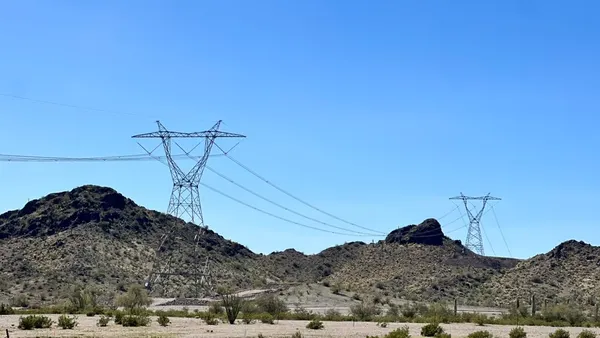Isle au Haut is a small island in the Gulf of Maine, about six miles offshore. Primarily a summer residence, the island has power delivered to the local utility via a sub-sea cable and is not a unique situation, except for two factors.
At summer's peak, Isle au Haut Electric Power Company (IaHEPC) boasts 140 electric subscribers. And the cable which delivers its power is expected to fail at any time.
The cable is almost two decades past its expected life and so, residents who own the utility are scrambling to find an alternative supply of energy. Power on Isle au Haut is expensive, and prices would rise if the island opted to only utilize its backup diesel generation.
Enter Dynamic Grid Systems (DGS), which residents selected to build a microgrid. But because the microgrid will serve all of the island's customers, and will essentially build a new rate schedule from scratch, the company is really being asked to create a new utility from the ground up.
"This one is unique," Kay Aikin, COO of Dynamic Grid Systems and CEO of Introspective Systems, told Utility Dive. The microgrid is expected to be operational around the first half of next year, or possible a little later, she said. Should the cable fail in the meantime, the island's more-expensive diesel generation would be utilized.
DGS is a joint venture of Introspective Systems and Dynamic Organics, formed to develop microgrids that optimize the use of multiple sources of energy based on real-time cost and energy load demands.
Isle au Haut's needs, and the looming failure of its electric lifeline, "created a unique challenge because they have to provide all the power on site," said Aikin. "Microgrids connected to the greater grid are actually easier to design — there is what I like to call the 'infinite battery.'"
That "infinite battery" is the ability to access grid power if the microgrid's generation fails. "There are some challenges in being connected to the grid, but they are mostly technological challenges," said Aikin. Primarily that means getting a grid-following inverter that can follow the performance specs of the utility.
"A three-stage grid-following inverter, you can almost buy that off the shelf now," said Aikin. "What hasn't been done a lot in the microgrid market is having actual consumers involved on the microgrid."
That means a transactive energy environment, where neighbors may sell power to one another and demand response programs automatically balance the grid. DGS will utilize an "introspective pricing network," which Aikin said the company is constructing under a U.S. Department of Energy contract.
"This microgrid is the utility," said Aikin. "And the utility has 140 meters that they send bills to every month."
Aikin said she is now working to develop a rate plan and revenue model for the utility. "We're building it from the ground up, so they can take it to the Public Utilities Commission."
The island's microgrid may be developed in two stages; the $1.3 million system is cost prohibitive on the island. The aim is to lower prices or keep them stable for residents.
Isle au Haut's peak load varies by season, dipping to 27 kW in the winter and reaching 95 kW in summer.
Emera Maine delivers energy to the island for roughly $0.14/kWh, but the distribution markup is steep. Residents actually pay about $0.42/kWh — and that's actually the lowest of the Maine islands, said Aikin.
As long as the power line back to the mainland is working, "they actually make a little extra money because any excess power they'll be able to sell," said Aikin.
The project includes a solar array, batteries and active load demand management. Along with that, however, DGS included air-to-water heat pumps/thermal storage to use excess solar production.
Along with storing renewable energy for building heat, the pumps will require additional electricity which will raise the utility's overall sales. "It increases sales to the utility, which spreads operating costs over more kilowatt hours," said Aikin.
Looking ahead, DGS expects to have engineering and finance finalized in the next six weeks, at which point equipment will be ordered. The size of the total system is still being modeled, but Aikin predicts a battery around 250 kW / 1 MWh in size.
The Isle au Haut microgrid will be a tiny utility, but Aikin says there are clear lessons larger utilities can take from its development. As increasing renewables come onto the wider grid, energy pricing at peak production will become highly variable.
"Utilities need to have an expanded tool set to manage these conditions rather than just batteries," Aikin said. "This includes new demand response strategies, not just turning off loads but incentivizing loads to respond to the price signals, using extra energy during high solar or high wind conditions.
"This will make a much more dynamic grid that can better optimize all assets lowering costs for the utility and by extension the consumer," Aikin said.












